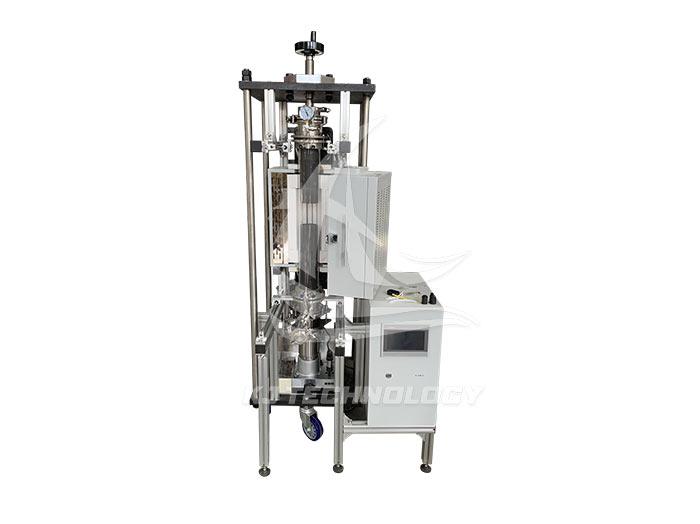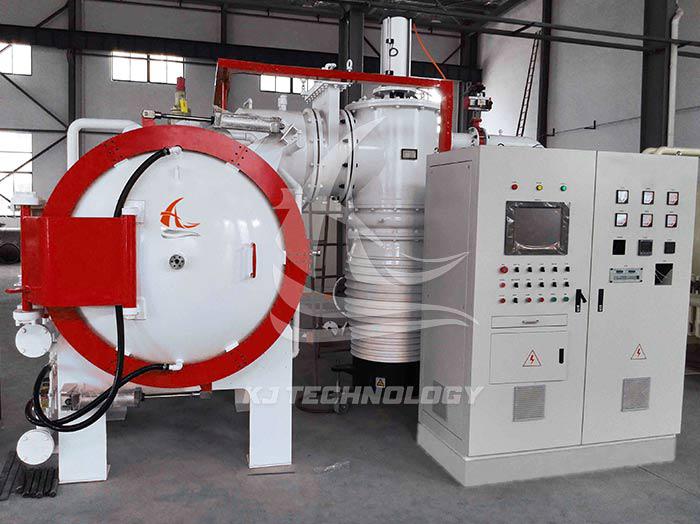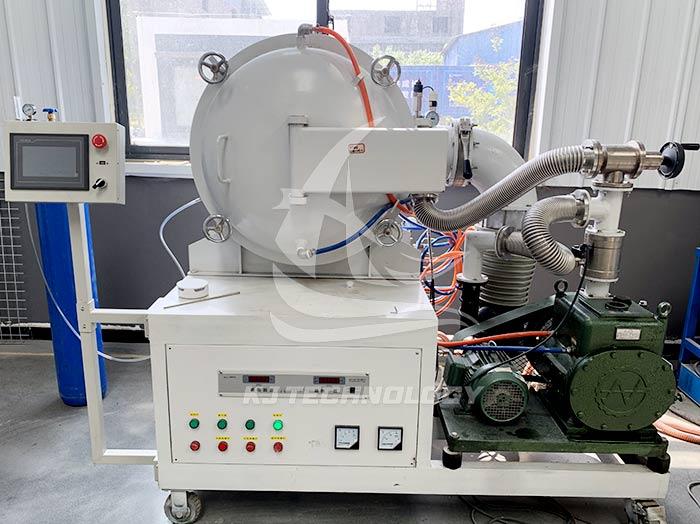vacuum gas quenching furnace
 11-10-2025 Author: KJ technology
11-10-2025 Author: KJ technology
Vacuum gas quenching furnace is an advanced heat treatment equipment that combines vacuum environment and high-pressure gas quenching technology, widely used in aerospace, automotive manufacturing, precision machinery and other fields. Its core advantage lies in achieving non oxidizing heating and rapid uniform cooling, significantly improving material properties and processing quality. The following analysis will be conducted from four aspects: working principle, technical characteristics, application fields, and maintenance points:
1. Working principle
Establishment of vacuum environment
By combining a mechanical pump with a diffusion pump, the pressure inside the furnace is pumped to 10 ⁻³~10 ⁻¹ Pa, completely eliminating oxygen and water vapor, preventing surface oxidation and decarburization of the workpiece, and ensuring no pollution during the heat treatment process.
Radiation heating and temperature control
High temperature resistant materials such as graphite or molybdenum sheets are used as heating elements to uniformly heat the workpiece through thermal radiation, with a temperature of up to 1300 ° C. Equipped with PID or multi-stage program temperature control system, the temperature uniformity is controlled within ± 5 ° C to ensure the accuracy of material microstructure transformation.
2. Technical features
Non oxidative decarbonization
The vacuum environment isolates oxygen, resulting in a higher surface finish of the workpiece, eliminating the need for subsequent sandblasting and polishing processes, saving time and labor costs.
Uniform and controllable cooling
Gas quenching is more uniform than oil quenching, reducing thermal stress and structural stress caused by differences in cooling rates between the interior and surface of the workpiece, and lowering scrap and rework rates. For example, the lifespan of mold steel is improved after gas quenching.
environmental protection and energy conservation
No need for quenching oil, no oil fume or oil vapor emissions, avoiding fire risks; The cooling medium (such as nitrogen) can be recycled with low consumption, which meets the requirements of modern industrial environmental protection.
High automation and flexibility
Through programming, various processes such as quenching, tempering, annealing, brazing, sintering, etc. can be implemented. The cooling rate can be precisely controlled by adjusting the gas type, pressure, and fan flow rate to meet different material requirements and support flexible production of multiple varieties and small batches.
3. Application Fields
aerospace
Processing high-end materials such as titanium alloys and high-temperature alloys to enhance their strength, toughness, and fatigue performance, meeting the stringent requirements of key components.
automobile manufacturing
Used for heat treatment of engine parts and transmission components, such as Dongfeng Motor EQ series water pipe joints using a flux free red copper brazing solution to solve the splashing and pollution problems of traditional high-frequency brazing, reduce leakage rates and single piece processing costs.
precision machinery
Process tool steel, mold steel, high-speed steel, etc. to ensure the dimensional stability and surface quality of workpieces, and reduce subsequent machining allowances.
4. Maintenance points
Vacuum system maintenance
Daily inspection: Monitor the operating status of the vacuum pump (such as sound and vibration) to ensure no oil or gas leakage; Check the vacuum gauge reading, the normal value should be stable within the set range.
Regular maintenance: Replace the vacuum pump oil and clean the oil mist filter every 6 months; Check the sealing of the vacuum valve every 12 months and replace the aging sealing ring.
Heating system maintenance
Daily inspection: Observe the color change of the heating element, which is normally dark red. If it turns white or breaks locally, it should be replaced immediately; Use an infrared thermometer to monitor the surface temperature of the component, and the temperature difference within the same temperature range should be ≤ 20 ° C.
Regular maintenance: tighten the wiring terminals of the heating element every 6 months to prevent an increase in contact resistance; Replace aging components every 12 months (with a lifespan of 8000-12000 hours).
Maintenance of gas circulation system
Daily inspection: Monitor gas pressure and flow rate to ensure that the nozzle is not blocked; Check the operation status of the fan, the wind speed should reach 20m/s.
Regular maintenance: Clean the nozzle dust every 3 months and optimize the airflow distribution; Check the efficiency of the heat exchanger every 12 months and clean or replace it if necessary.
Water cooling system maintenance
Daily inspection: Monitor the flow rate and temperature of the cooling water to ensure that the inlet temperature is ≤ 30 ° C and the outlet temperature is ≤ 50 ° C; check for water leakage at the water pipe connections.
Regular maintenance: Replace the cooling water and clean the sediment in the water tank every 6 months; Check the operation status of the water pump every 12 months and replace worn bearings.








